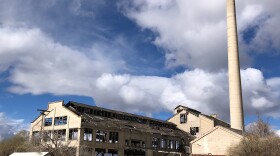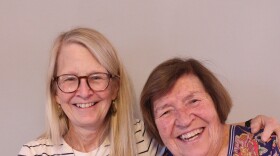
Mary Heers
Volunteer ProducerMary got hooked on oral histories while visiting Ellis Island and hearing the recorded voices of immigrants that had passed through. StoryCorps drew her to UPR. After she retired from teaching at Preston High, she walked into the station and said she wanted to help. Kerry put her to work taking the best 3 minutes out of the 30 minute interviews recorded in Vernal. Passion kicked in. Mary went on to collect more and more stories and return them to the community on UPR's radio waves. Major credits to date: Utah Works, One Small Step, and the award winning documentary Ride the Rails.
-
Elizabeth Wilson and Janet Meadows recount the story of their family persevering and rising above challenges as they came to live in St. George, Utah.
-
Longtime friends James Oscarson and Rich Guy met at StoryCorps in St. George and then took off in a self-driving Tesla to discuss their lives, friendship, and worldviews.
-
German POW’s in Cache Valley? This led me to ask more questions. I found out in 1945 there were close to 400 German POWs living in tents in a work camp at the Cache Valley Fairgrounds.
-
Hans Glassmann and Wendy Womack discuss their experiences making documentary films and what drives each of them.
-
Georgia Thompson asks her stepdaughter, Nancy Antle, about growing up in Cedar City. We hear about the university, theater, the Utah Shakespeare Festival, and school in Cedar City, all from the perspective of a child.
-
Lanny Langston brings his dad to StoryCorps to learn a little about where he came from, and the family's roots in Hurricane, Utah.
-
Teri Guy and Rebecca Oscarson come to StoryCorps to reflect on their over five-decade-long friendship.
-
The Ginormous Pumpkin Regatta began in Daybreak, Utah on Oct 18 with eight 600 lb pumpkins lined up on the edge of the community’s lake.
-
Judith and Pete Rognli talk about navigating life in St. George by bike with their young son Felix.
-
Awhile back, I was riding my bicycle along country roads in Cache Valley, when suddenly six unusual looking chicks ran across the road in single file right in front of me. I slammed on the brakes just in time as the chicks disappeared down the farmhouse driveway on the other side of the road.











